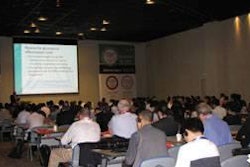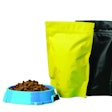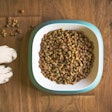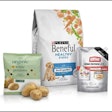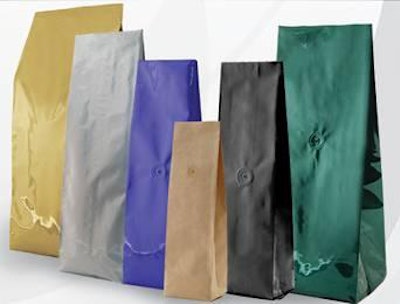
The US demand for petfood packaging is expected to rise 4.8% annually to US$2.5 billion in 2018 (see Figure 1), according to Ohio-based market research firm The Freedonia Group Inc. That demand is being driven by the need for more advanced packaging—higher-value, more sophisticated packaging that meets the expectations of an ever-growing market overall and the premium petfood market in particular. As consumers become increasingly involved in their pets’ well-being, and become more educated in where their pet products are coming from, specific packaging issues come to light. One of those issues is sustainability.
Sustainability isn’t exactly a new concept to the petfood industry. “Sustainability packaging initiatives have been around for a decade and a half in our sector,” says Bill Langhout, field sales manager and sustainability representative for Mondi in North America. “It all started with recycling and then went to polylactic acid (PLA) – biobased material (biodegradable), and then morphed into a number of different concepts, initiatives that were driven by end-users, namely Walmart. The trends have really come full circle and now the big push is number 2 pouches, recycling or creating recovery programs for different types of packaging.”
The Pet Industry Sustainability Coalition is a non-profit organization focusing on sustainable advancement in the industry, providing resources and tools for advancement and promoting continual improvement. The coalition addressed petfood packaging specifically during its 2013 SuperZoo presentation, where it highlighted a case study involving “I and love and you.” The company was looking for a new consumables food bag that met their durability standards, remained affordable, met design specifications for unique branding choices and minimized its environmental impact.
“I and love and you” isn’t alone. These needs are becoming increasingly common in petfood packaging, and the industry is stepping up its game to ensure products are sustainably packaged on store shelves. “Pet food customers are looking for packaging that is safe, clean and contaminate free,” says Matt Bryant, president of PBFY Flexible Packaging. “In addition, they want quality packaging that will keep their products fresh and durable.”
Petfood packaging companies are focusing on the three R’s (Reduce, Reuse, Recycle) to boost their sustainability options:
Biotre by Pacific Bag Inc. is composed of 60% by weight biodegradable materials made from renewable resources such as wood pulp and certified by a third-party lab to conform to ASTM International and OECD (the Organisation for Economic Cooperation and Development) biodegradability standards. The remaining 40% (by weight) of the material is polyethylene from fossil fuels with an additive that is designed to make it break down over five to ten years, reducing its impact on the waste stream compared to standard polyethylene.
Mondi uses 15% recycled content in the sealant layer for laminated products. It also makes use of polylactic acid, a biodegradable polyester derived from renewable resources such as corn starch, and cellophane, derived from renewable fibers such as wood. But the company’s biggest opportunity, according to Langhout, is in resource reduction. “By using higher amounts of a mineral filler that is abundantly available, fossil-fuel based polymer structures can be reduced significantly while film properties stay close to a pure recipe,” says Langhout. Mondi’s concepts include Perfoampack, which introduces a high-performance gas into a polymer film. Its reduced use of raw materials (30%) translates to a lighter film with direct cost reduction and a significantly improved carbon footprint.
Wildlife Sciences developed new packaging in conjunction with Bosch Packaging Technology equipment to eliminate the need for consumers to have direct contact with its suet-based bird food product, and took sustainability into account at the same time. In addition to letting consumers handle the product without getting their hands dirty, the new packaging uses 80% less packaging by weight compared to the former tray solution and is composed of 100% recyclable materials. Since the packaging is generated from flat rollstock film, it requires significantly less space for transportation, reducing the overall carbon footprint.
PBFY Flexible Packaging has noticed an increase in interest for environmentally friendly packaging and has responded by stocking compostable paper bags. “We have no doubt that sustainable packaging has a current foothold in the petfood industry,” says Bryant. “We will continue to bring sustainable packaging as the demand increases, especially on customization packaging.”
Haver Filling Systems offers the Topline 2000, ideal for packaging free-flowing granulated products into pre-fabricated open-mouth bags. Topline 2000 is compact and fully automated; it also lends itself to the conservation side of sustainable packing, since it’s equipped with an energy recovery system that enables the machine to consume minimum power during production.
Sustainable petfood packaging is a trend with staying power, according to the pet industry, because consumers are only going to become more conscious of what they’re buying. Balancing consumer wants with business needs when it comes to sustainability will be key. “As suppliers, we have had to balance what makes sense,” said Langhout. “Is it affordable and is it ‘sustainable’? We can make almost any product, but will the public purchase it? Is it cost effective; will it really do what we want? This is where we find ourselves.”
Almost everything consumers use is packaged, says William J. Walters, executive vice president of packaging technology for Pacific Bag, and they interact with packages every day. “It’s on their minds, and they want to do something better for the earth than putting their packaging in the trash,” says Walters. “Ideally, the package should be made of all renewable resources and not fill up landfill space, while performing like fossil-fuel-based materials and costing about the same. Getting to that point is a process, but it is a process that has a good foothold on the human food side of things, especially in higher end foods, and I believe it will continue and grow in petfood.”



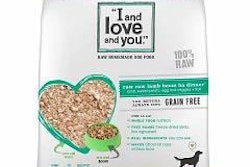

.png?auto=format%2Ccompress&fit=crop&h=167&q=70&w=250)
